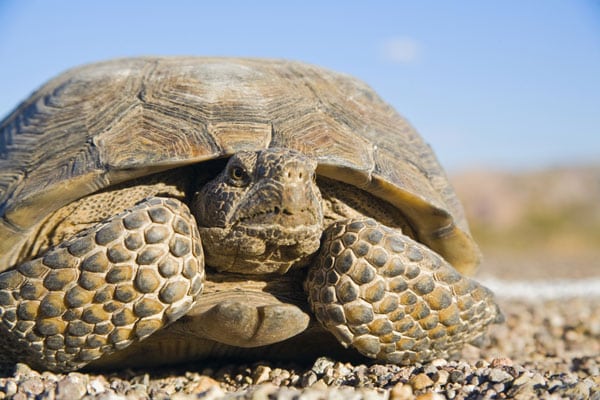The Arizona Game and Fish Department announced that it has more than 40 desert tortoises (Gopherus agassizii) available for adoption, provided you mee
The Arizona Game and Fish Department announced that it has more than 40 desert tortoises (Gopherus agassizii) available for adoption, provided you meet certain criteria. If you live in Tucson, Phoenix, Yuma or Prescott, you may apply to adopt a tortoise. According to the AGFD, you must have an enclosed area with a yard free from potential hazards to the tortoise such as a dog or a pool. Your yard must also have a shelter as well as shade so the tortoise is protected from the elements.
Desert Tortoise Information
Herping California's Mojave Desert for the Desert Tortoise
Drought Linked to Decline of Desert Tortoise in California's Sonoran Desert
Sonoran Desert Tortoise Feeding And Diet

thinkstock
Arizona Game and Fish attribute the abundance of captive tortoises to excessive captive breeding.
Requirements to Adopt a Desert Tortoise
- Review the yard checklist in appendix I (Tortoise Care & Husbandry link). These are the minimum requirements for your yard to pass inspection.
- Build a pen or make sure your yard is secured with no possibility for escape. Check that your fence is underground at least 5 inches and that there is no route to escape around a gate, drainage hole, etc. A self-locking gate is desirable to prevent escape.
- Provide food for the tortoise in the form of grass or native plants. Irrigation will be necessary, especially for the grass. A roll of sod is often adequate to feed a tortoise, so it is not necessary to have a large grassy area.
- Build a burrow following the guidelines on this site. Make sure your burrow is situated so no water can enter the burrow from rainfall, irrigation runoff or drainage. It is best to locate the burrow in a high area of your yard that is shaded in the afternoon. Cover the burrow with a minimum of 8 inches of soil on top, sides and back. The soil is essential to provide adequate insulation for the tortoise.
- Review the yard checklist one more time to make sure you are prepared for a yard inspection. If so, call 520.883.3062 and leave a message on the tortoise hot line requesting a yard check. Leave your full name, address and the best time to contact you.
- An inspection will be scheduled and a determination made at that time what size tortoise will be best for your yard. If you wish to adopt a small tortoise remember to downsize your burrow. Tortoises like cozy burrows. If you wish to adopt hatchings, a cover over the pen may be necessary to protect them from predators.
- If you have any questions while preparing your yard, please call 520.883.2702 and leave a message and a volunteer will return the call to assist you.
"Primarily because of excessive backyard breeding, this iconic desert species has become overpopulated in captivity and there aren’t enough homes for them," Tegan Wolf, Arizona Game and Fish’s tortoise adoption program specialist said a statement released to the media.
Once captive, desert tortoises cannot be released back into the wild due to a potential upper respiratory disease that can be introduced into the wild desert tortoise population.
The adopted tortoises remain the property of the state of Arizona. Potential adoptees will serve as private custodians of the chelonians, not owners.
For more information on the adoption program for the desert tortoise, visit the Desert Museum website.



